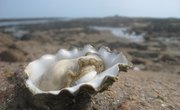From roly-polies in your backyard to deep-sea scavengers, many different isopod varieties exist. In fact, if you created an isopod species list, you'd have to make sure you have room for over 10,000 different kinds! Though they might look like bugs, researchers actually classify isopods as crustaceans – the subphylum that also contains crabs, lobsters, shrimp, copepods and more.
What Is an Isopod?
An isopod is a creature in the taxonomic class Isopoda. These animals live both on land and in the sea. They have similar characteristics, though they range in size from less and an inch in length to a whopping 14 inches. Generally, isopods have elongated bodies covered in armored plates across their dorsal surface – along their back.
The species most commonly referred to as an isopod is the common pillbug (Armadillidium vulgare). You probably know the common pillbug by another name – roly-poly. This name comes from their propensity to roll into a ball when disturbed.
Isopod Breeding Cycle: Reproductive Habits
All isopods have similar breeding habits, though aquatic species do differ to some extent. The common pillbug is a good example of some of the specific courtship behavior you might see in the isopod breeding cycle. Breeding season begins in the spring, though this depends less on time of year and more upon warming temperatures.
The female enters a receptive period where she will form a pair and mate with a male. During this receptive period, the female releases aggregate pheromones to attract male suitors. Both males and females mate with multiple partners, and females can store sperm from several different males for later use. She can store sperm for an entire year to use in the next breeding cycle.
Isopod Breeding Cycle: Egg Production
After mating, the female produces eggs. Nearly all crustaceans must lay eggs in an aquatic environment, even those species that live on land. However, land isopods utilize a unique structure known as a marsupium. The marsupium is a fluid-filled pouch on the female's underside which she uses to brood her eggs.
The female broods the eggs within her marsupium for a period of two or three months. Once the eggs hatch, the young can remain inside the marsupium for an additional three or four days.
Isopod Breeding Cycle: Early Life
While the female broods her eggs and newly-hatched young, also known as mancas, she typically remains hidden in a burrow. Once they emerge from the marsupium, the mancas either remain in the burrow with their mother or dig themselves new tunnels off of the mother's burrow.
The young isopods remain hidden within the burrow until they have molted several times. Once they have completed enough molts, their armor stiffens to protect them from harm and they are ready to leave the burrow. Once they reach between two and three months of age they are ready to reproduce themselves.
Isopod Breeding Cycle: Lifespan and Behavior
Adult isopods can reproduce for several seasons. On average, they live for approximately a year and a half. However, some individuals can live for two years or more. Mortality rates are higher in animals that have been isolated from other isopods, suggesting that social behavior is important for their survival.
They spend most of their adult life hiding beneath leaf litter and various detritus. This helps them retain moisture, as decaying matter has higher humidity levels. In areas with lower humidity, isopods spend less time feeding and more time sheltering to avoid desiccation, or losing moisture.
Their ability to roll into a ball, also known as conglobation, occurs primarily as a defense mechanism. The isopod curls upon itself to protect its softer underside, exposing only its armored outer shell to any potential predators.
References
About the Author
Marina Somma is a freelance writer and animal trainer. She holds a B.A. in Psychology and a B.S. in Marine and Environmental Biology & Policy from Monmouth University. Marina has worked with a number of publications involving animal science, behavior and training, including animals.net, SmallDogsAcademy and more.
